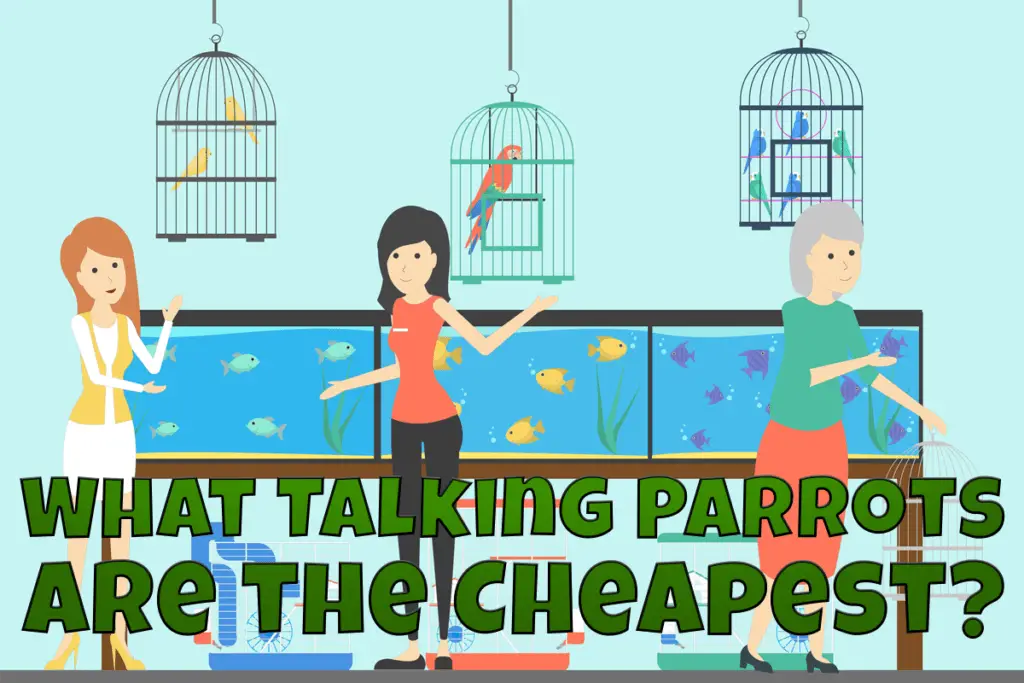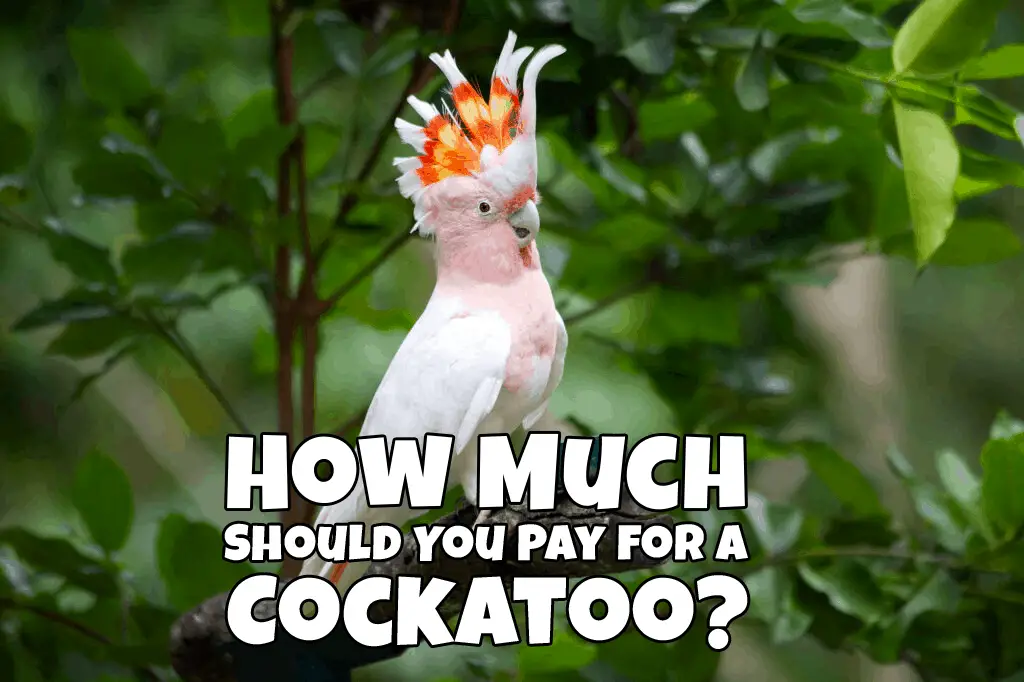When it comes to parrots’ coloring, experts emphasize the difference between colors in all species. Among the numerous colorful variants, green parrots are the most widespread. Actually, you’ll easily find a mixture of green with some other colors than a fully monotone green bird. But what makes green parrots so great for homeowners?
In nature, green is the dominant color among parrots of different kinds. The same distinction is present among home pets. Green parrots are more widespread and easy for novice care. Overall, I’ll enlist 25 types of green parrots of the wild and domestic life. For the latter, the most popular kinds are the Amazon parrot, the lovebird, the Quaker, and, of course, the budgie.
So, the following 101 will cover everything you need to know about green parrot species.
Budgie
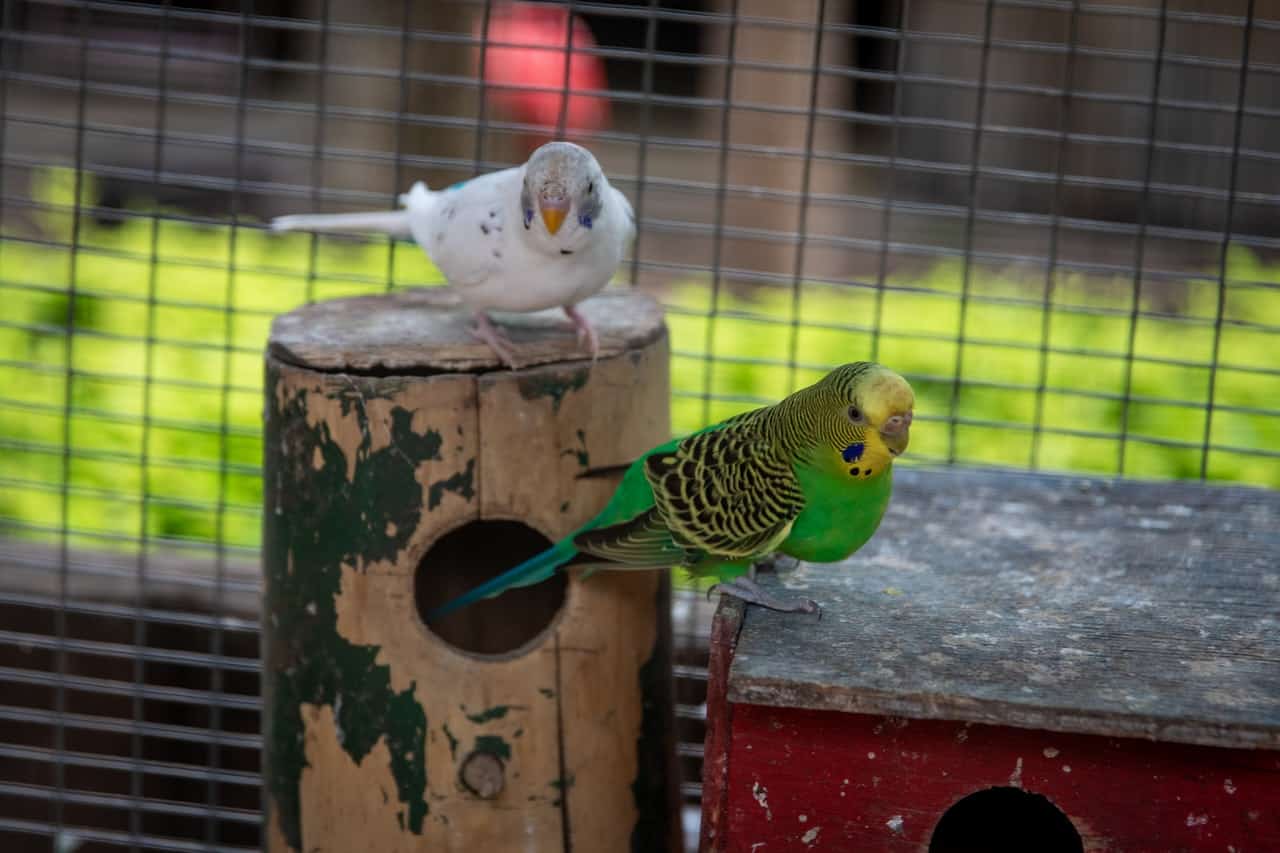
Okay, let’s start with the most common and widely known green parrot – budgie. If you are interested in parrots at all, you already know this bird. However, you may know the Budgeringer in a different color! Green is not their own option – they come in yellow, blue, green coloring, and everything in-between.
The budgie is undoubtedly the most widespread pet parrot. They are small, active, reasonably intelligent, and easy to take care of.
One of the things you probably don’t know about them is that budgies are quite talkative. These are not the traditional type to be trained to talk; they can learn an impressive vocabulary of around 1000 words.
The budgie usually reaches 6-8 inches in length and weighs 1 ounce.
What Is a Group of Parrots Called? Name Revealed!
Lovebird
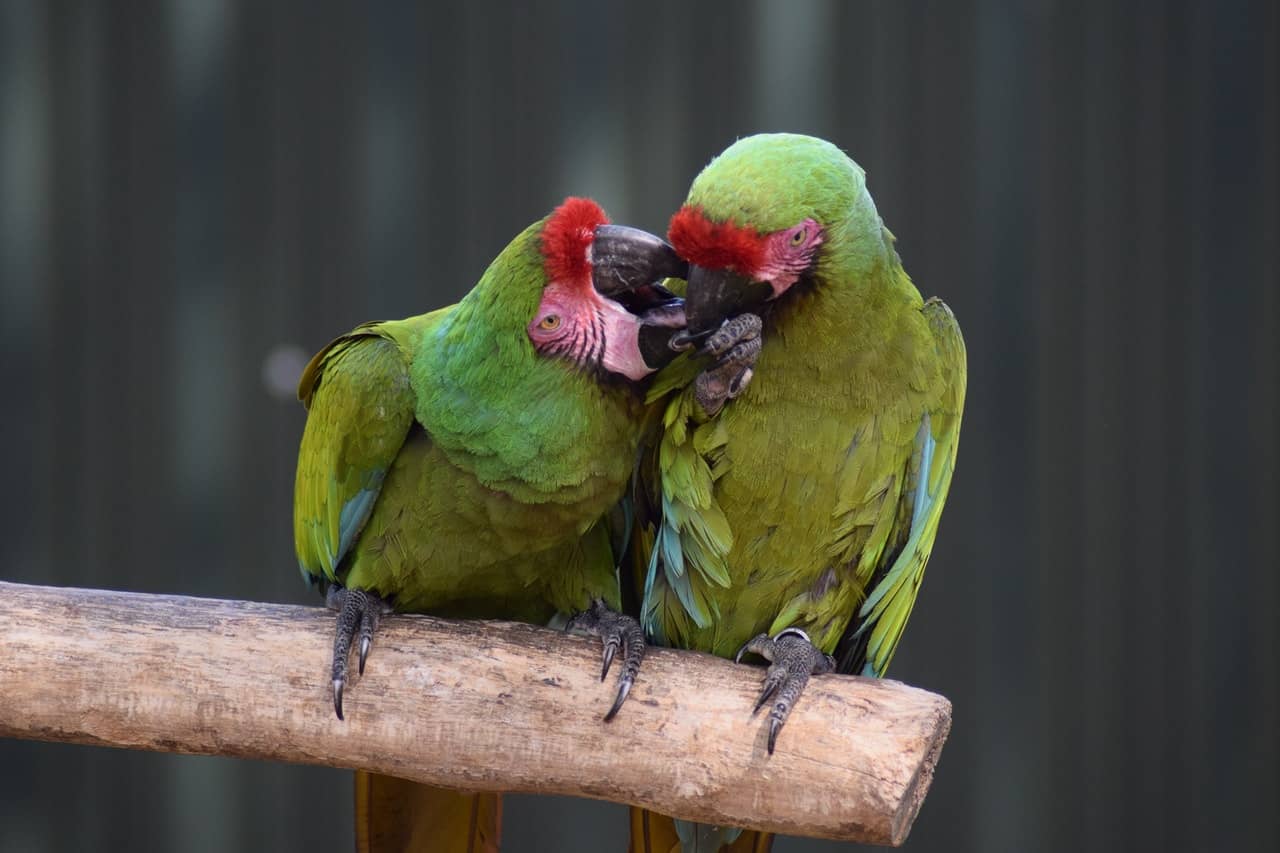
Okay, all parrot enthusiasts know how a lovebird looks. Even if they are still new in studying these birds.
Although, lovebirds come in 9 different variations. But they are all small parrots with distinctive shape and color patterns. The majority of lovebirds have the dominant color green, but the pattern depends on the species. Unfortunately, several of them are now considered endangered today.
Lovebirds are usually bought in pairs because the birds form strong bonds. That is why they are called lovebirds!
Although they are very sociable as pets, lack of care makes them nippy.
Size-wise, these are tine birds, only 5-7 inches long and under 2 ounces.
A Full List of Lovebird Types (With Photo and Video)
Red-shouldered Macaw
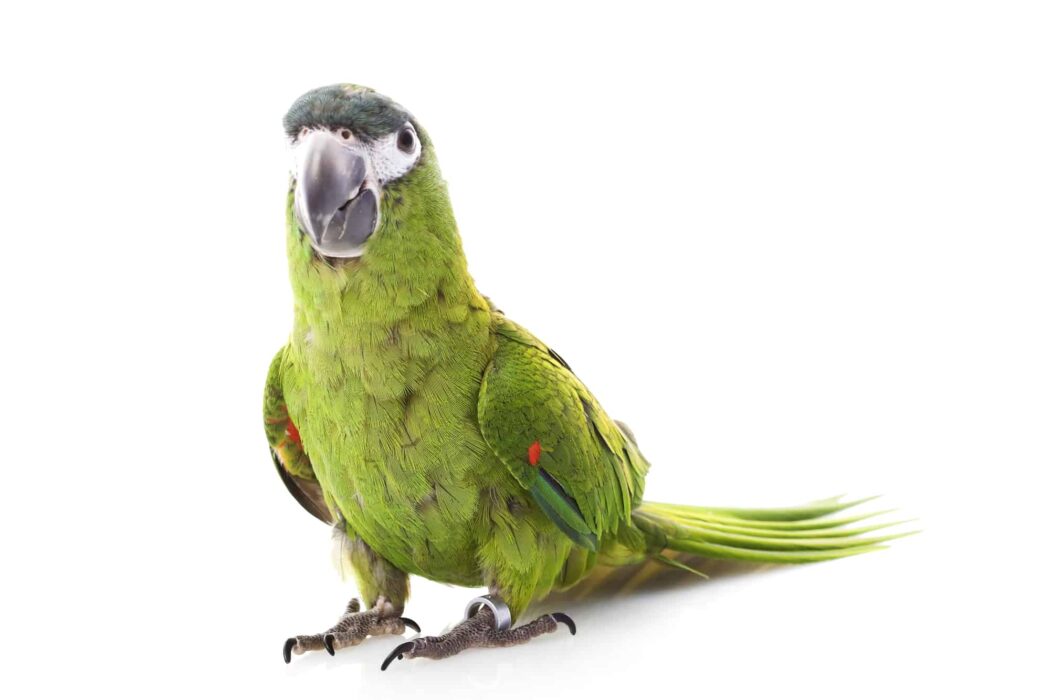
A Macaw is one of the most popular talking parrots. Unlike the regular Macaw you see in pet shops, this species is smaller. Many families choose a Red-Shouldered Macaw if they don’t have enough space at home for the big bird.
Like all Macaw birds, this type is among the most intelligent parrots. They can learn words, phrases, and tricks. They need lots of training and care to grow into loving birds with close bonds to the owner.
Their personality, coupled with their small size of only 12 inches, makes them a perfect pet. The weight is 4-6 ounces.
Great Green Macaw
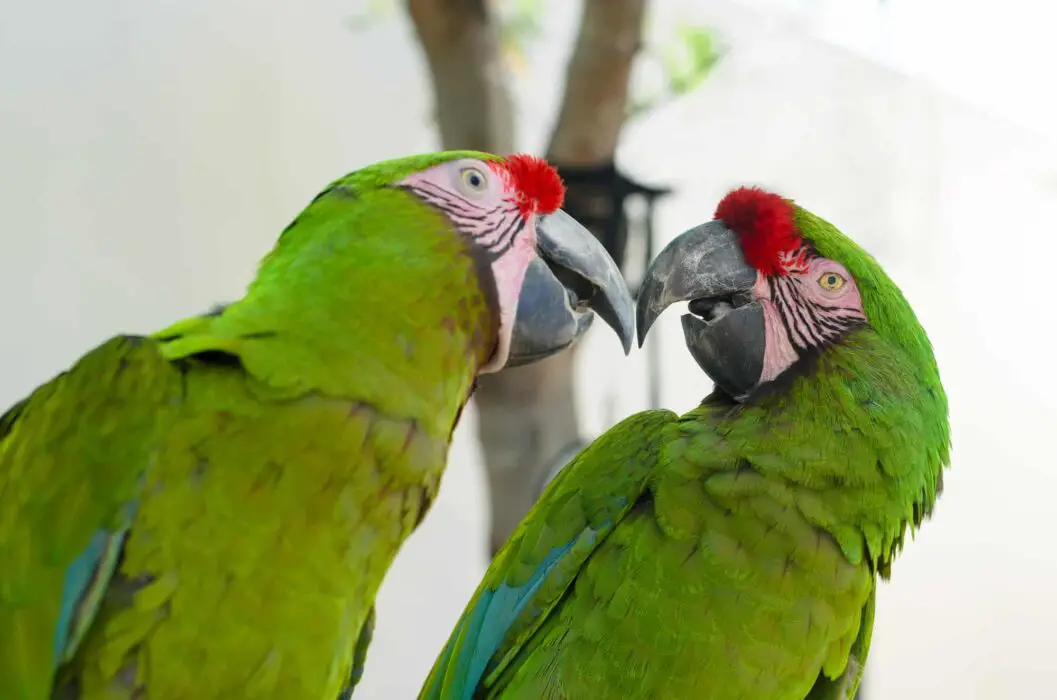
Not to diminish the other Macaw species, but this bird is called the “Great Green.” Truth to be told, this one is quite large for a parrot! Actually, the Great Green is one of the largest Macaws in the world. This bird is a rare one that is entirely green. (they sometimes come with bits of other colors on the lower rump or tail. This species is yet another bird indigenous to Central and South America. And they are considered an endangered species as well, with under 3500 birds.
The sad story of the bird is so because of the loss of its natural habitat. The numbers have been dwindling drastically in the last decade.
The bird is rather huge for a home – 33 – 35 inches and it weighs almost 50 ounces!!
Military Macaw
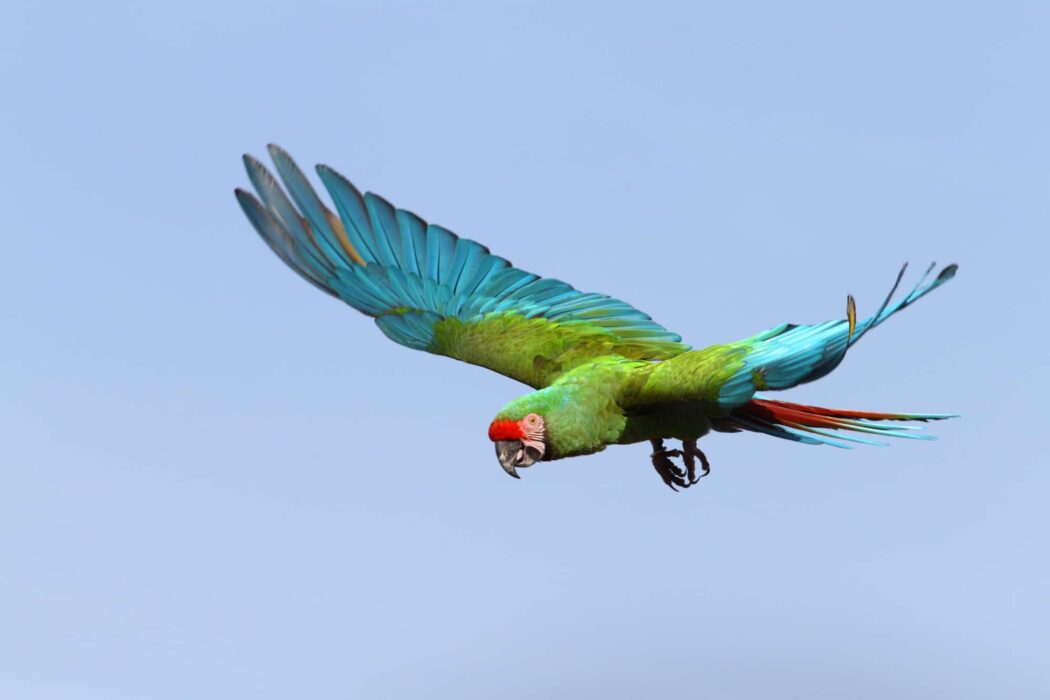
Yet another Macaw on the list! These parrots are generally green. But why is this one called “military”? It’s because the coloring of these birds resembles a military parade uniform! It is mostly green with some darker and olive plumage and blue wing edges and red forehead and tail.
This is a protected species, so you won’t easily find it in a pet shop. Like many other South American parrot species, this Macaw is endangered.
Do not be disappointed! Though this bird is sociable and lovely, it’s quite temperamental and not a big talker!
Length-wise, it reaches 30 inches! and weighs 2 pounds.
A Full List of Macaw Types (With Photo and Video)
Amazon Parrot
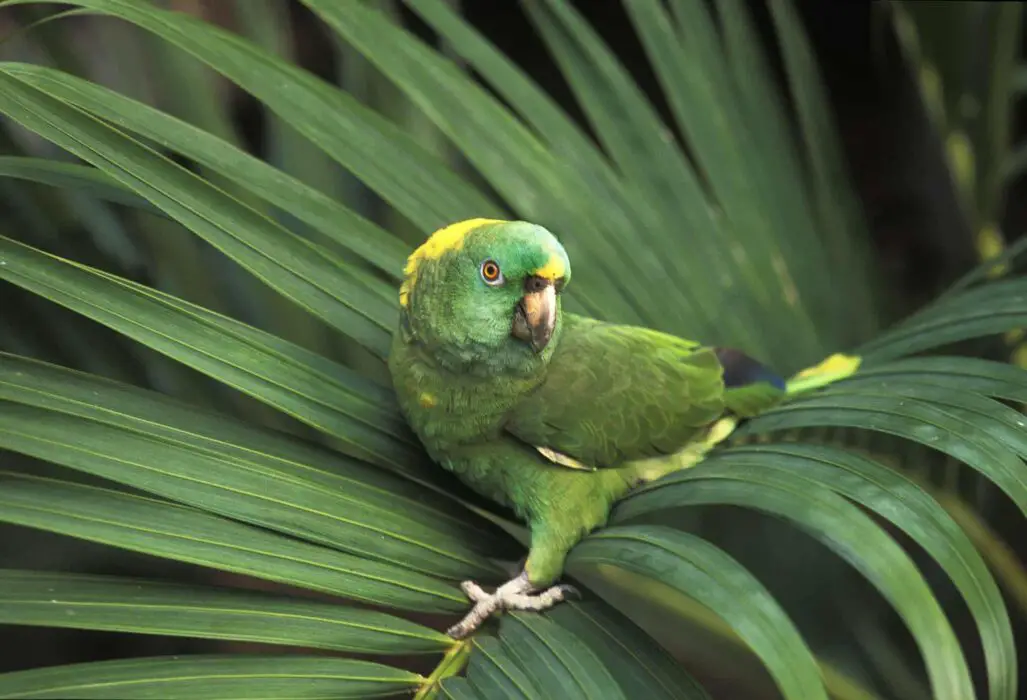
Just as the name suggests, this parrot species is native to the banks of the Amazon River and the whole of South America, as well as the Caribbean. This bird is not entirely green; it has spots of yellow around the beak and tail (sometimes, some blue as well).
The Amazon Parrot is one of the most popular housepets! It is an outgoing and playful bird. It demands lots of attention and playtime from the owner. This bird likes its toys, puzzles, and, surprisingly, wrestling. As an owner of the Amazon Parrot, we’ll have to spend lots of time with your household bird. You’ll notice that their mood changes and learn to read the body language.
This species is quite loud and talkative. It likes to sing, imitates sounds, and talk. Its vocabulary may reach 500 words, but the average is 300. They can talk for hours on end!
Length: 15-17 inches; weight: 16-23 ounces
Red-Fronted Parrot
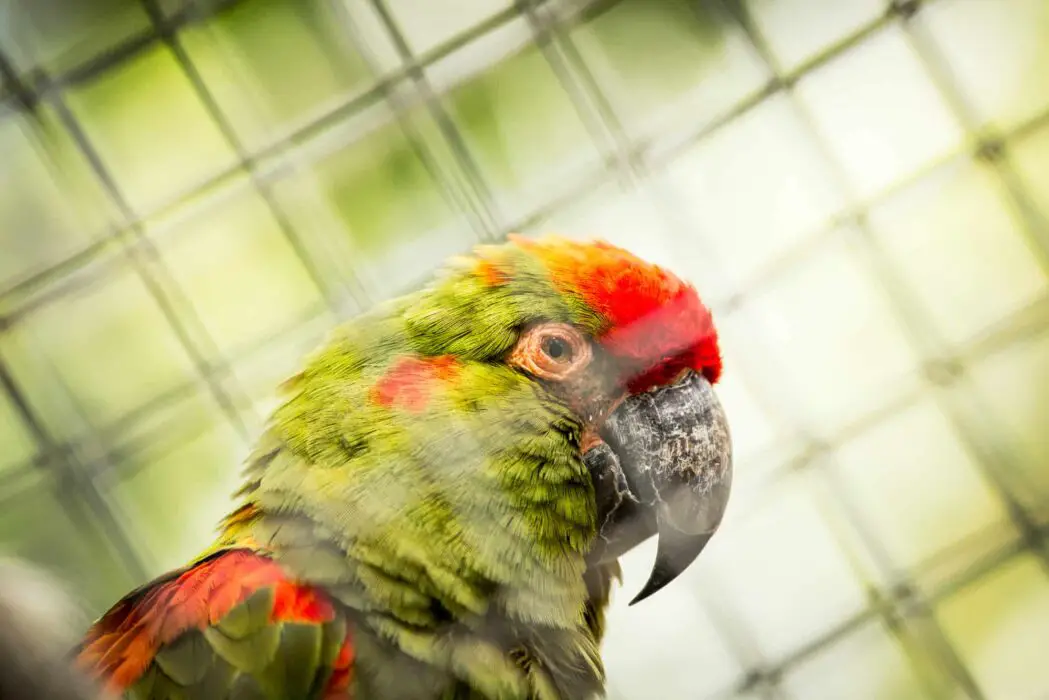
Just as the name suggests, this is not a purely green parrot; it comes with spots of red feathers here and there. It doesn’t have the full front of red feathers, though. The spots can be seen near the beak, on the head, back, and wings.
This is an African parrot, widely spread in the east, west, and central parts of the continent. The species is also known as “Jardine’s parrot.” You may have also heard the scientific name Poicephalus Gulielmi (though only a few people bother to learn the scientific names).
This is one of the biggest representatives of the African Poicephalus species. In the wild, it can live up to 60 years. When taken care of by humans, such a long lifespan is easy to achieve.
They are pretty intelligent as well. With proper and consistent training, red-fronted can learn words, phrases, and sound effects. Some owners even describe them as showing some human qualities.
Also, a great bonus, if you want to keep the bird at home, is the pleasant voice and singing of the Red-Fronted. Besides, they are less noisy than other parrots.
In length, they reach 10-12 inches and weigh 7-10 ounces.
17 Kinds Of Red Parrots (With Photos)
Thick Billed Parrot
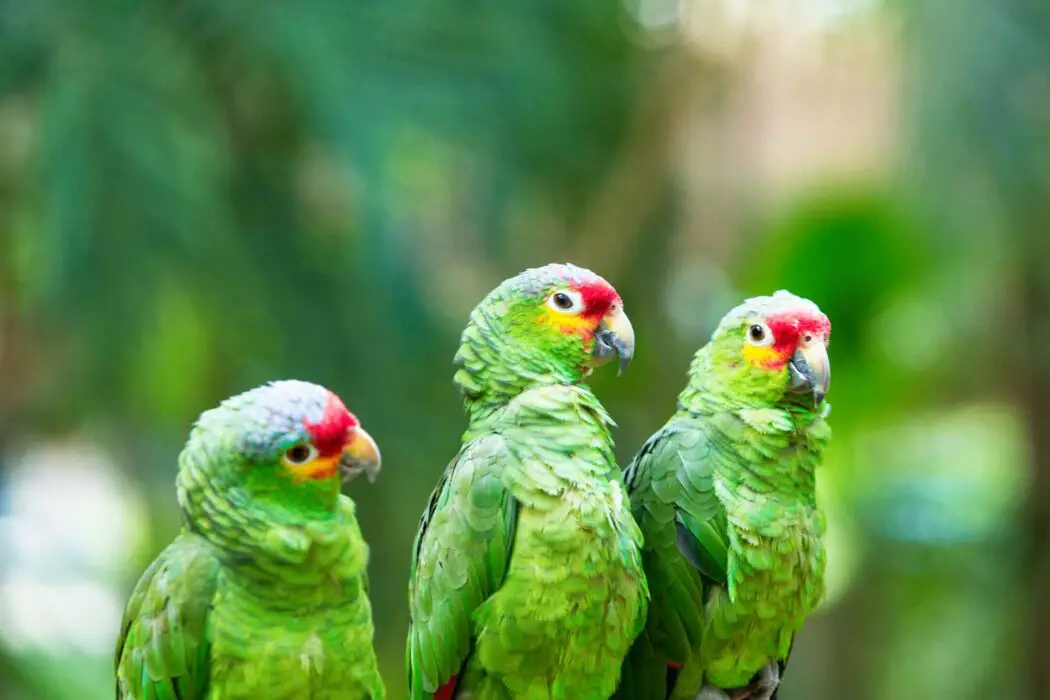
To take a look at the Thick-Billed parrot in the wild, you’ll have to travel to Mexico. Scientifically, it is known as Rhynchopsitta Pachyrhyncha.
This one is also not a fully green bird. It has a red plumage on the head. An interesting fact: currently, the Thick-Billed Parrot is the one parrot species indigenous to North America. All the other local parrots are already extinct. And this one is on the brink as well – this endangered species accounts for only 2500 birds in the world, with the number constantly decreasing.
Adult birds have a length of 15-17 inches and weigh approximately 12 ounces.
Blue-Bellied Parrot
If you think that green and blue is the perfect color combination, the Blue-Bellied Parrot will satisfy all your aesthetic demands! The plumage is mostly green, mixed with the blue hues on the tip of the tail and underbelly.
The homeland of this unique bird that is the only species in its genus is Brazil, mainly the Southeastern parts.
Today, only a few birds can be found in captivity as the species is dwindling. According to estimations, only 10000 birds are alive. However, the area is protected by the government in order to restore the population.
The bird reaches 11 inches and weighs a bit under 4 ounces.
Short-Tailed Parrot
This medium-sized parrot is yet another mostly green bird, with only bits of black around the eyes. This is the epitome of a tropical bird! These short-tailed parrots can be found along the Amazon banks in Brazil, Peru, Ecuador, and Colombia. In the area, it is a common parrot. However, it is rarely kept as a house bird.
The length is 9-10 inches, weight – around 7 ounces.
Edwards Fig Parrot
This is such a beautiful parrot! Its mainly green coloring is mixed with the hues of yellow, red, blue, and purple! plumages on the neck and belly. It is an indigenous species of Northern New Guinea and Indonesia. Unfortunately, the parrot trade is not focused on these parrots, and you can rarely find them for household pets.
In the wild, they are active and playful and sociable when meeting a human. If you manage to find it for sale (legally, of course!), buy it with a pair for better adaptation.
Length: only 7 inches, weight 3.7 ounces
Sri Lanka Hanging Parrot
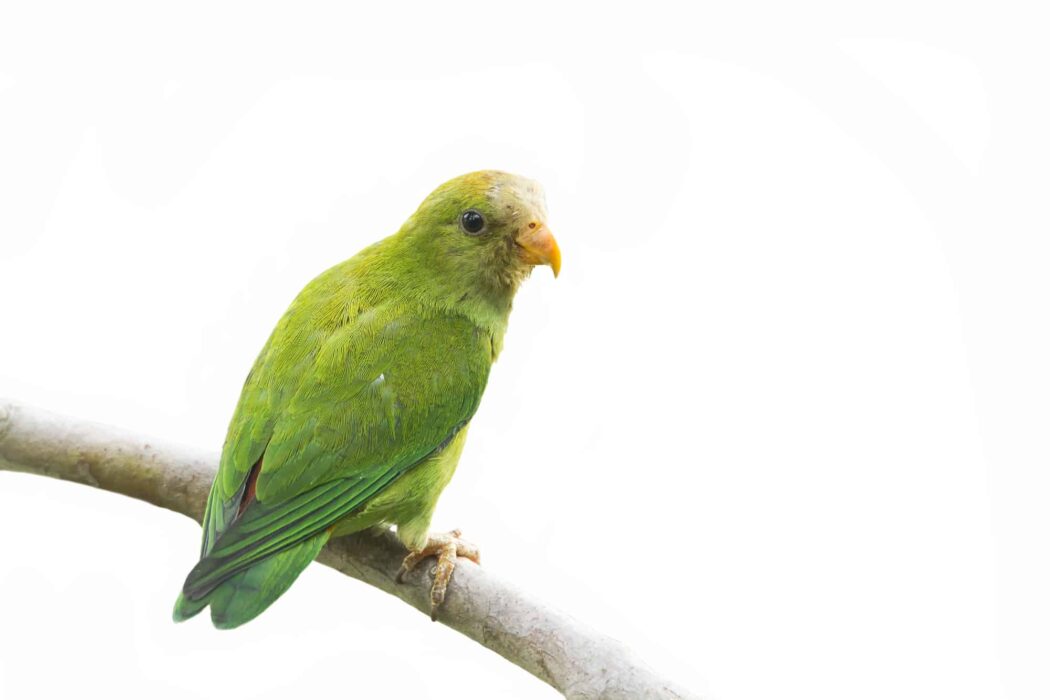
As you’ve guessed, this particular parrot is indigenous to Sri Lanka. This is not a gregarious bird and is often seen either alone or in tiny groups. It is a wild bird that is not seen as a home pet. At least, I’ve never seen a household with this bird before. And even in the wild, it is hard to notice them as they nest high in the trees and come to the ground very rarely. They have red and orange on their nape, back, crown, and rump. If you are lucky to see it while visiting Sri Lanka, take a photo!
Length: 5 inches, weight – unknown
Senegal Parrot
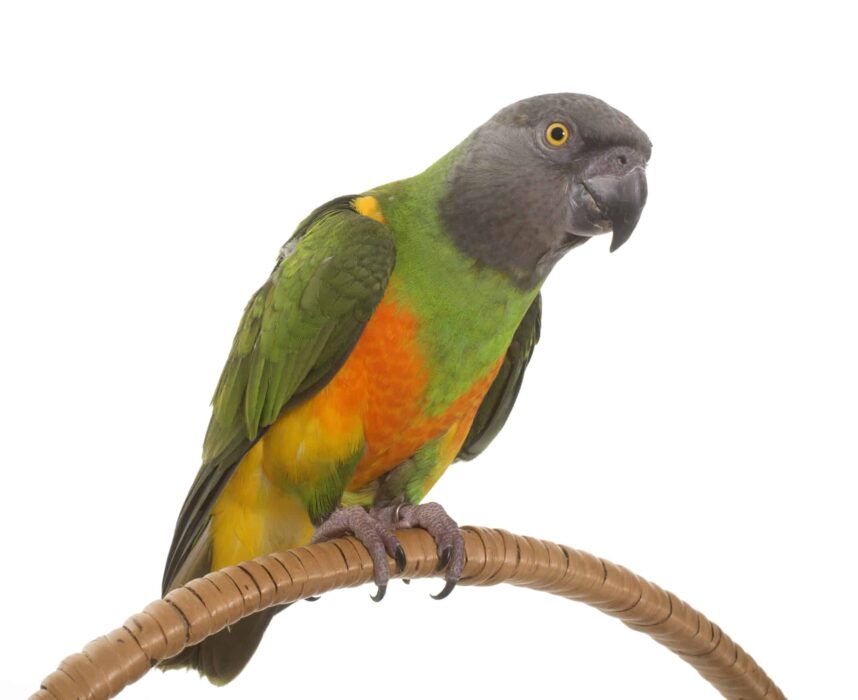
Senegal Parrot has a combination of green plumage with a greyish head and a V-shaped underbelly of yellow, red, and orange.
This parrot is the perfect house bird if you want something quieter than the usual singing, squeaking, and talking loud parrots. And, yet, they are great talkers, just calmer.
This bird will soak up as much attention as you are willing to give it but will not demand it! Put it on your shoulder; it’ll like it! It can be happy without a fellow parrot pair, with only you to keep it company.
Besides, it’s an average-sized bird of 9 inches and only around 4 ounces; so, it’ll fit perfectly on the shoulder.
Male Eclectus
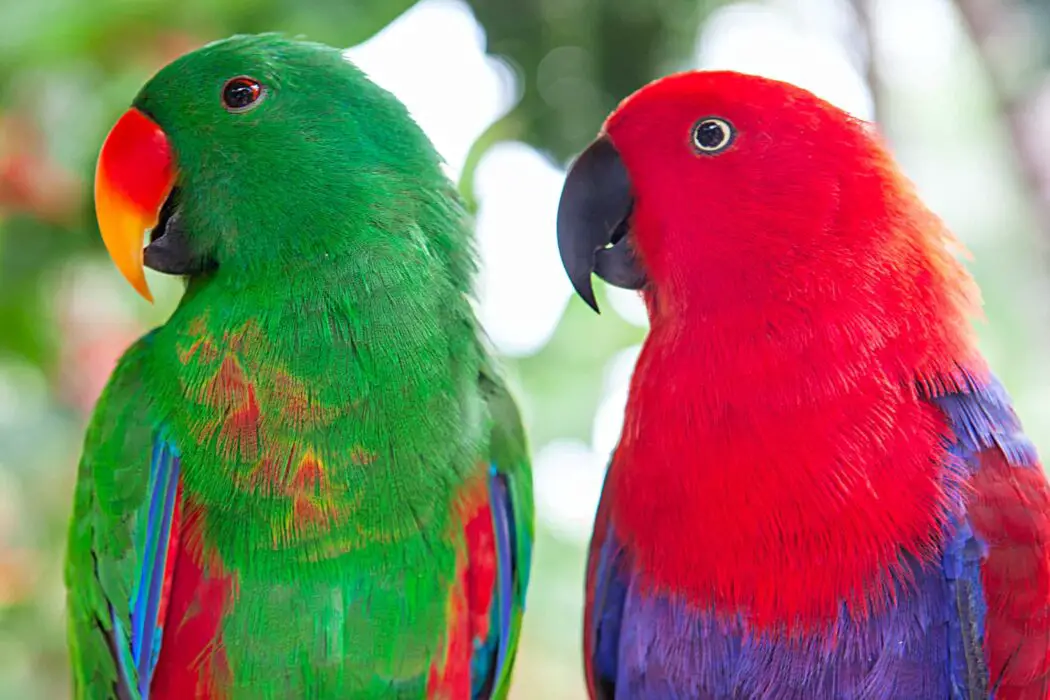
The Eclectus can be both green and red. You will often find one of these dominant colors combined with spots of the other on the tail. Female and male birds have different coloring: females are red and males green. Thus, in this article, we are talking specifically about male birds of this species, which is native to the Solomon Islands!
In a family, Eclectus can become a friendly and gentle companion. However, it requires a lot of attention, care, and training. Overall, this is an intelligent bird with an extensive vocabulary – one of the best talking parrots I’ve written about!
In length, they reach 17-20 inches and weigh 12-19 ounces.
Can Eclectus Parrots Talk? How Should I Teach Them
Maroon Bellied Conure
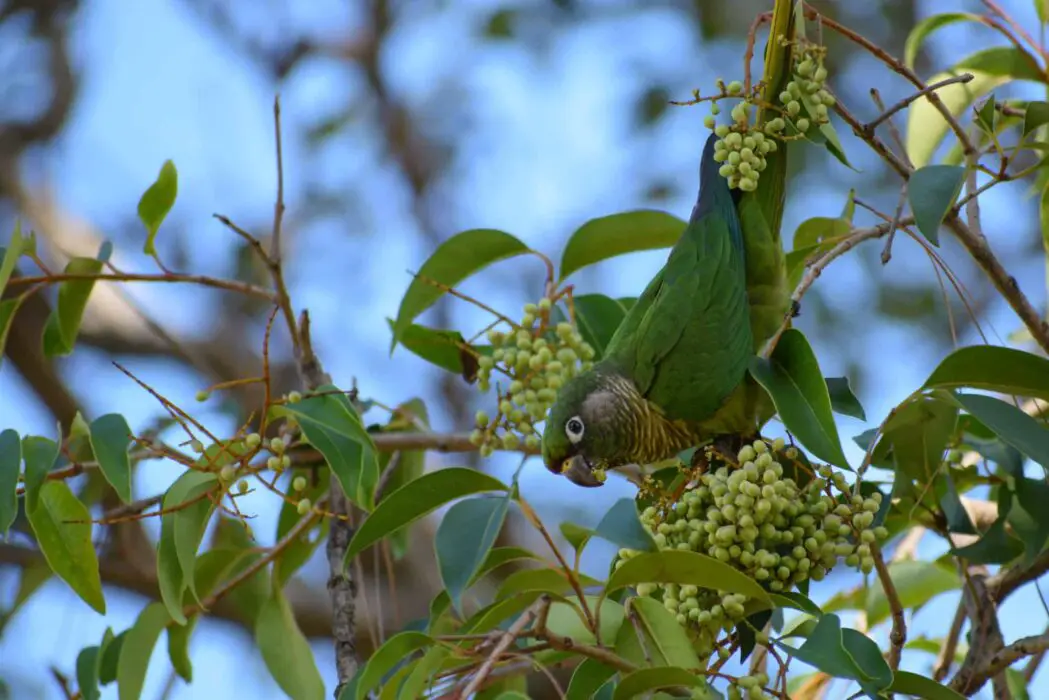
To take a look at this green Conure (with a maroon belly), you’ll have to wander into the wild forests of South America. The bird is often found in Argentina, Brazil, Paraguay, and Uruguay. In recent years, the governments of these countries take special care of certain species of birds, the Conure included, as they’ve become endangered due to poaching. Today, these wild green parrots are no longer under threat. Parrot enthusiasts lucky to communicate with the bird report that it is a lovely and playful parrot.
In length, they reach 10 inches and are no heavier than 3 ounces.
Green Cheeked Conure
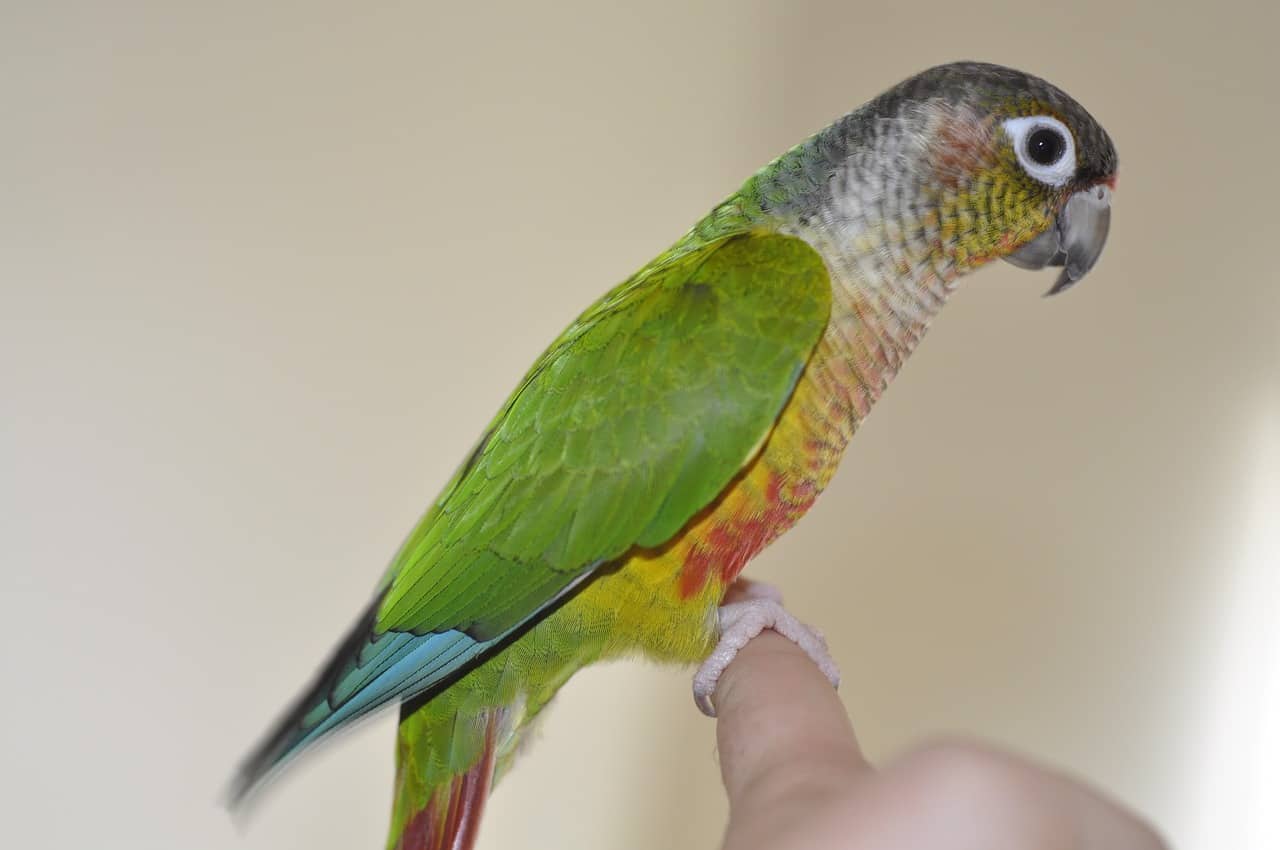
Okay, not only the cheeks of this parrot are green. Besides, they are not only green! There is an admixture of yellows and reds as well. Some grey and blue accents can be present as well.
Just as their coloring is vibrant, their personality is the same! They are friendly and not as noisy as many other smaller species! If choosing between this Conure and the previous Parrotlet, opt for this one if you need a bird that is user-friendly but requires lots of attention and will communicate with you. It’s a bit bigger as well – 10 inches and 2 pounds.
Painted Parakeet
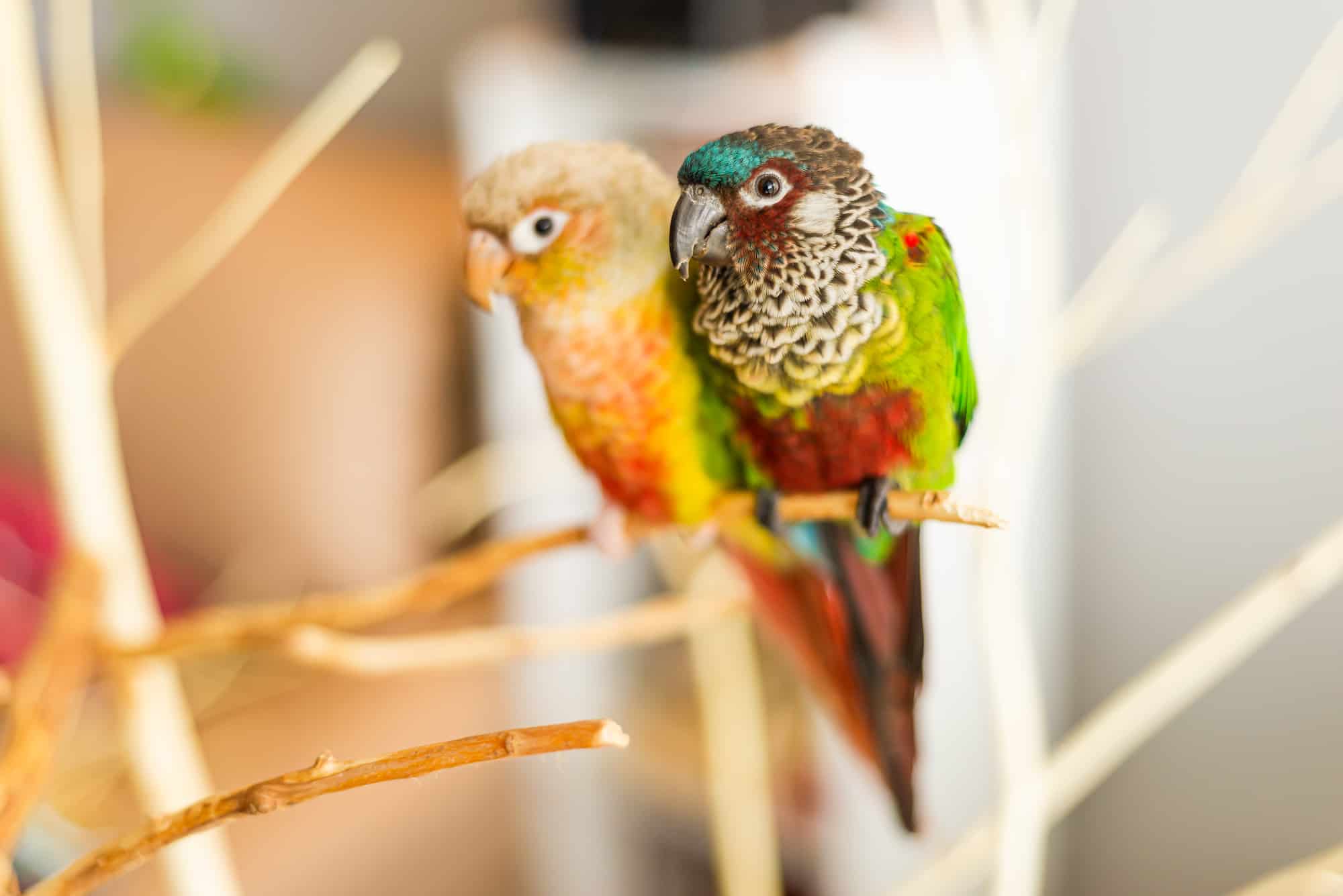
A fellow Conure from the northern and central parts of South America is known as Painted Parakeet. It is mostly green but has greyish feather tips and has small plumages of different colors, such as brown and blue on crown/nape and forecrown, respectively.
A Painted Parakeet is a rarity for homeowners as the birds are mostly found in the wild. Thus, it is a costly bid if you manage to find one.
Those few lucky owners report that this is the quietest bird in the conure family and is well-socialized.
In length, the bird grows to around 9 inches and weighs about 2 ounces.
What Can Parakeets Eat? Full Diet Review
Indian Ringneck Parakeet
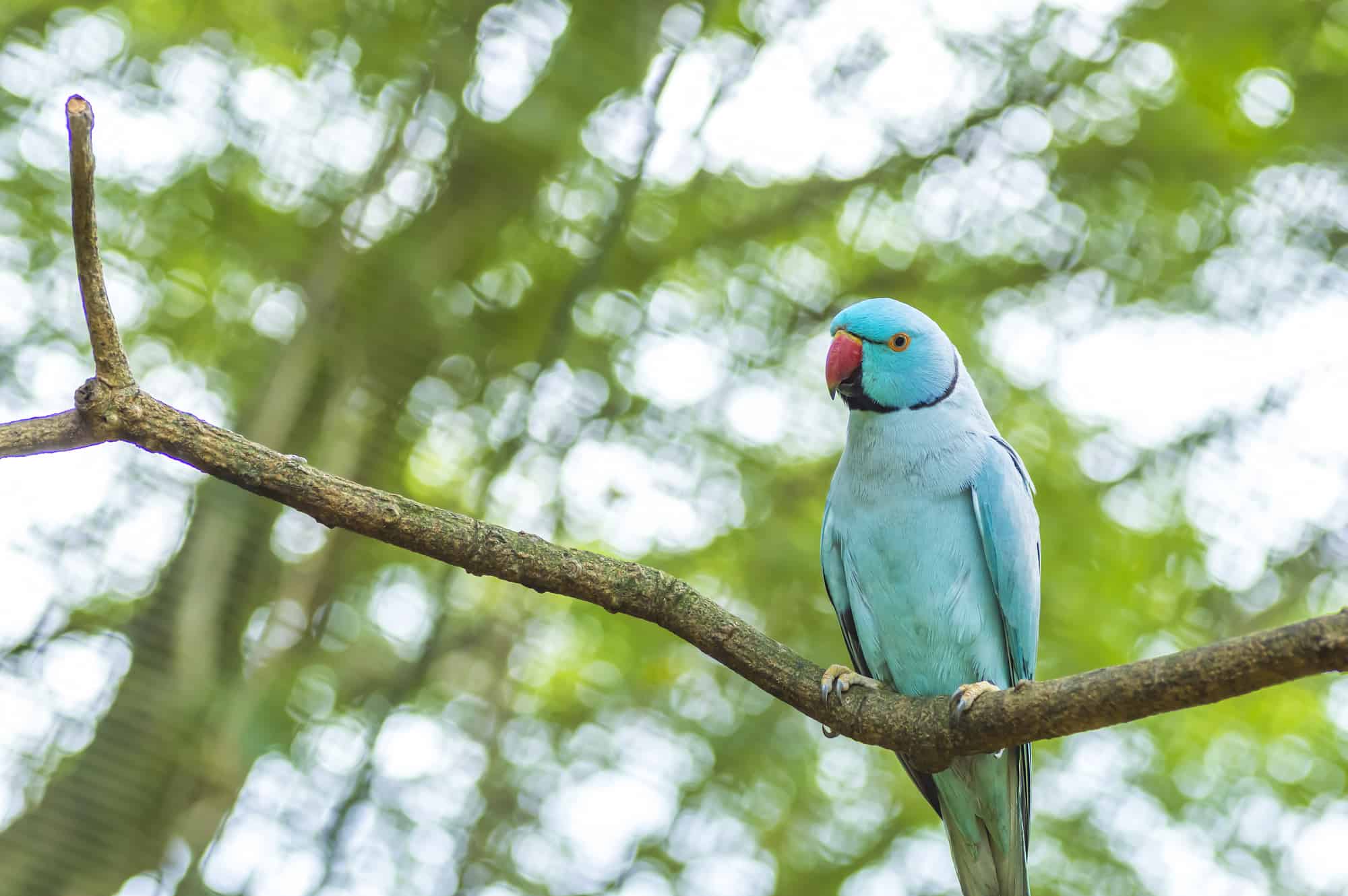
You’ve already guessed the homeland of this bird, right? At last, we came upon a parrot outside of America! Indian Parakeet is distinguished with sleek-looking feathers with green coloring and darker ridges around the head.
This bird is a popular choice of a house pet, even despite its complicated characters. This is a temperamental parrot. They can often be snippy and sensitive if limited in socialization and free time. This is a parrot that requires lots of open space to fly and mind its own business.
In addition, just like human teens, they go through a hormonal phase in adolescence.
This Parakeet is not beginner-friendly. But if you are experienced and still want this species, know that it grows into a medium-sized bird: 14-17 inches and 4 ounces.
Quaker Parakeet
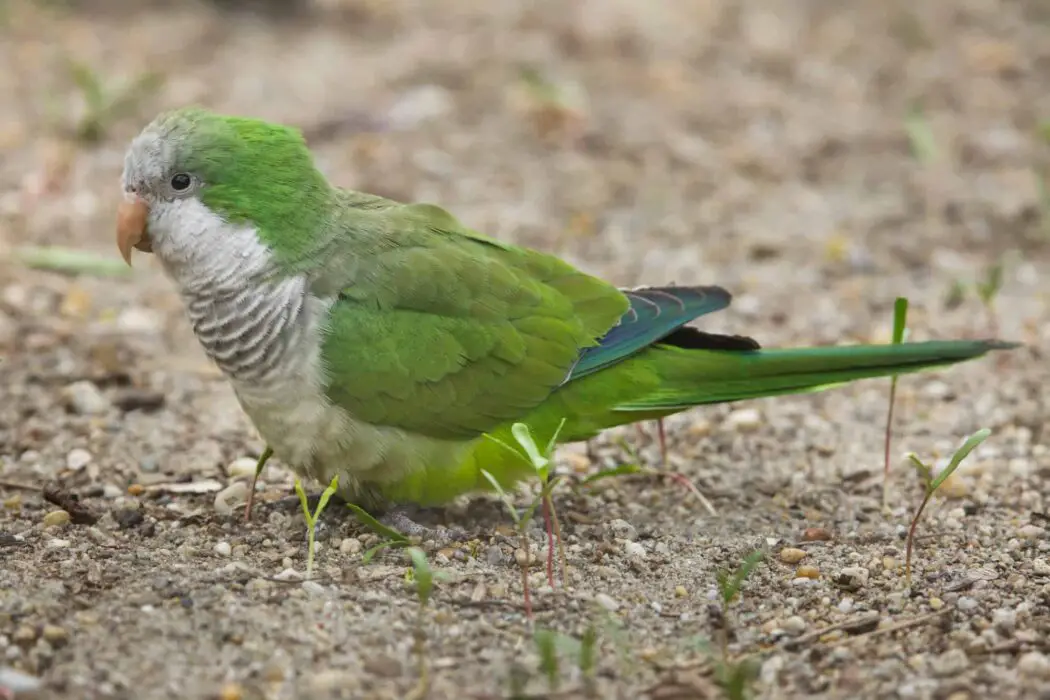
It’s kind of a fluffy parrot! The complete opposite from the Amazon one! Just as they look a bit funny, they are playful and comical birds. Not once have I heard from their owners that these Parakeets can be clowns! And many people choose them as pets!!
Besides their energetic, affectionate, and playful personality, they are great with speaking skills. In fact, they can rival the African Grey and the Amazon with proper training. Also, as a bonus (an important one), these Parakeets are way less expensive than the former two!
Unfortunately, many countries outlaw their trade as pets. The U.S. is one such country.
There are several reasons for that: they are a danger to agriculture and local birds, and they can transmit psittacosis to humans when ill.
Quaker Parrots Cost: Are They Expensive?
Spectacled Parrotlet
Looking for a purely green parrot? Then you should consider the Spectacled Parrotlet. It’s a cute bird. At first glance, you might even miss that this is a parrot and not some other exotic bird. Its colorings have slight hues of aquamarine and blue on the edges, but it generally looks all green.
This is the perfect little bird if you are not looking for a talking parrot! It has no talent in the field of speech but is rather sociable and playful! This is the perfect Parrotlet for a novice!
Its small size of only 5 inches (around 1 ounce) makes it suitable even for a flat.
Scarlet Shouldered Parrotlet
This particular type of parrot has another name that you may have heard of, Huet’s Parrotlet. Some enthusiasts also call it “red-winged.” No matter how you name it, the parrot still remains just as cute! It really does have some Scarlett hues on its forehead, but green is mostly mixed with brown and yellow. Among its indigenous countries are Bolivia, Venezuela, Guyana, Peru, Columbia, Ecuador, Brazil. Considering the extensive habitat area of the bird, the species is numerous and not at risk.
In the wild, they prefer living and traveling in groups of 15-50 birds! They are quite noisy in flight but can be calm and hidden when perched.
Scarlet Shouldered Parrotlet: 15-16 inches, 2 pounds.
Australian Ringneck
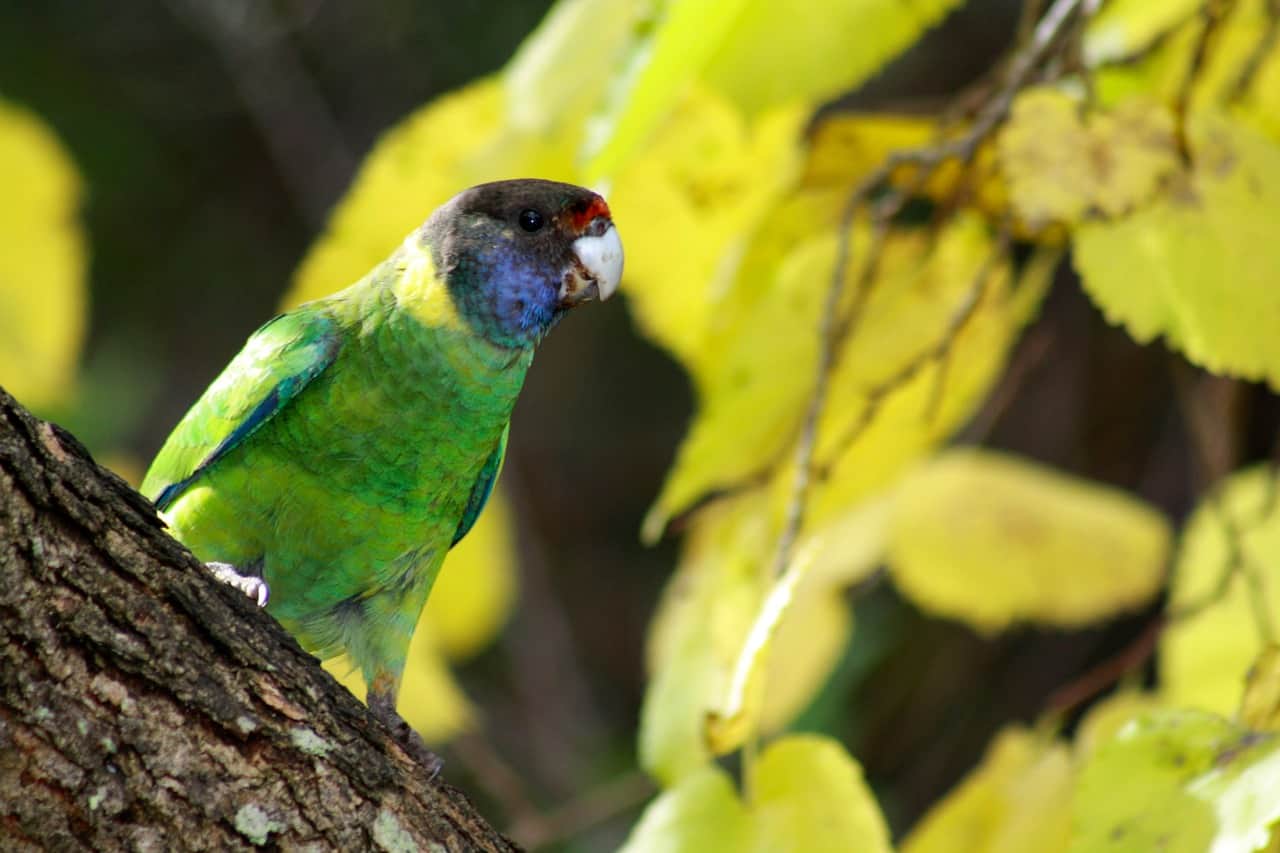
This parrot can only be found in Australia, one of the few. This is quite a large bird that comes in four different species determined by their coloration. All of them are mostly green, with bits of yellow and blue spots.
Uncommonly for parrots, they often come close to the urban and rural areas and can be seen picking food from the pavement. They rarely travel alone; you’d see them in pairs or flocks more often. For now, the genus is numerous and not at risk. Many Australian bird owners choose this parrot as a pet if they have enough open space.
The bird is large: 13 inches and 4-7ounces
Pacific Parrotlet
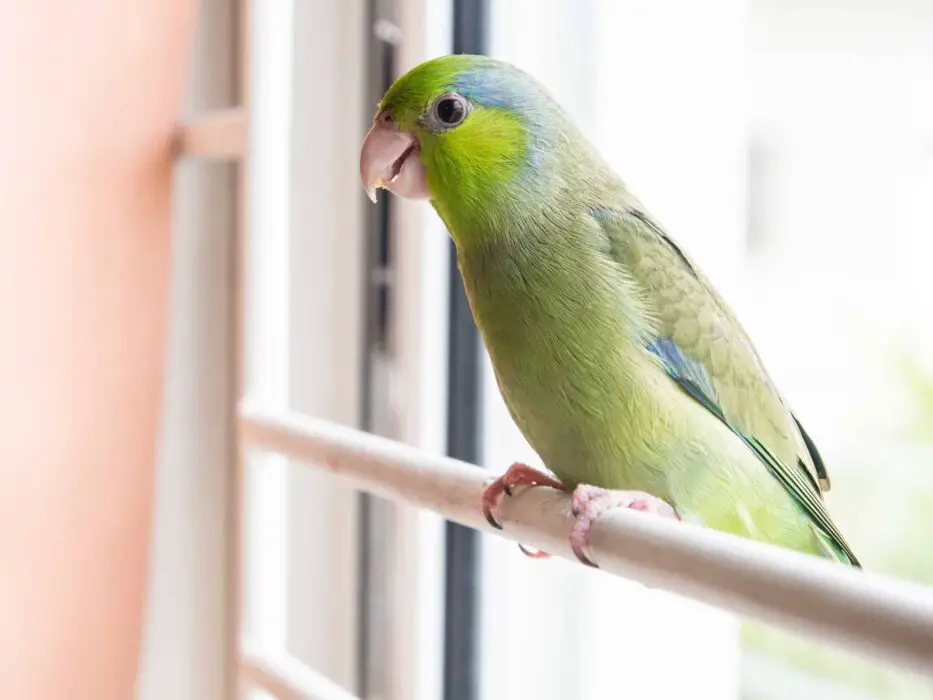
This is one of the smallest parrots in the world! In fact, it is so tiny that people usually refer to it as a “pocket parrot.”
You may immediately want to take this bird into your care because it is so cute and small, but be careful if you are a novice. Despite their tiny size, they have a huge personality! It demands your time, can be snippy, has mood swings, and is quite feisty, frankly.
If you have experience dealing with parrots, you’ll know how to handle this pocket pet and will enjoy its active personality. Be mindful, though – it bites hard!
The Parrotlet is often compared to an Amazon parrot as its smaller version with the personality rivaling in magnitude.
Length: 4-5 inches; weight: under an ounce!
Little Lorikeet
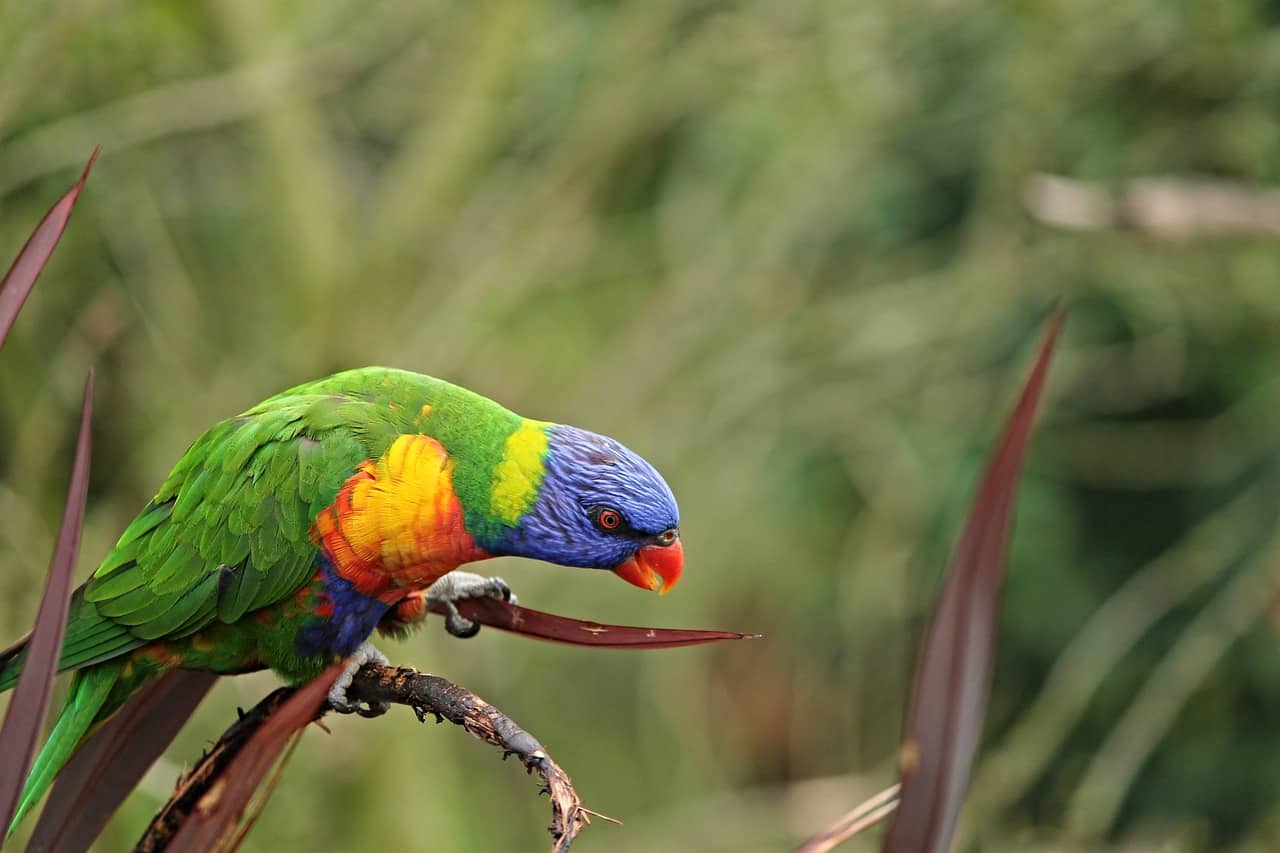
Another little bird in our green collection is the Little Lorikeet. A Lorikeet, unlike the Parrotlet, is outgoing and playful. They are intelligent birds who like to play with toys and different puzzles, ropes, and so on. You’ll have to play things if you don’t want them nipping your fingers! Lorikeets are not often kept as pets, though their affectionate personality makes them a more popular choice these days.
They can become a decent first parrot for you.
In the wild, Lorikeets like to hide in the trees and fly in flocks. You may want to invest in a pair of these birds.
Length-wise, they are a bit larger than the previous parrot but are the smallest in the Lorikeet family: 5.9 inches, weight – 1-2 ounces.
Scaly Breasted Lorikeet
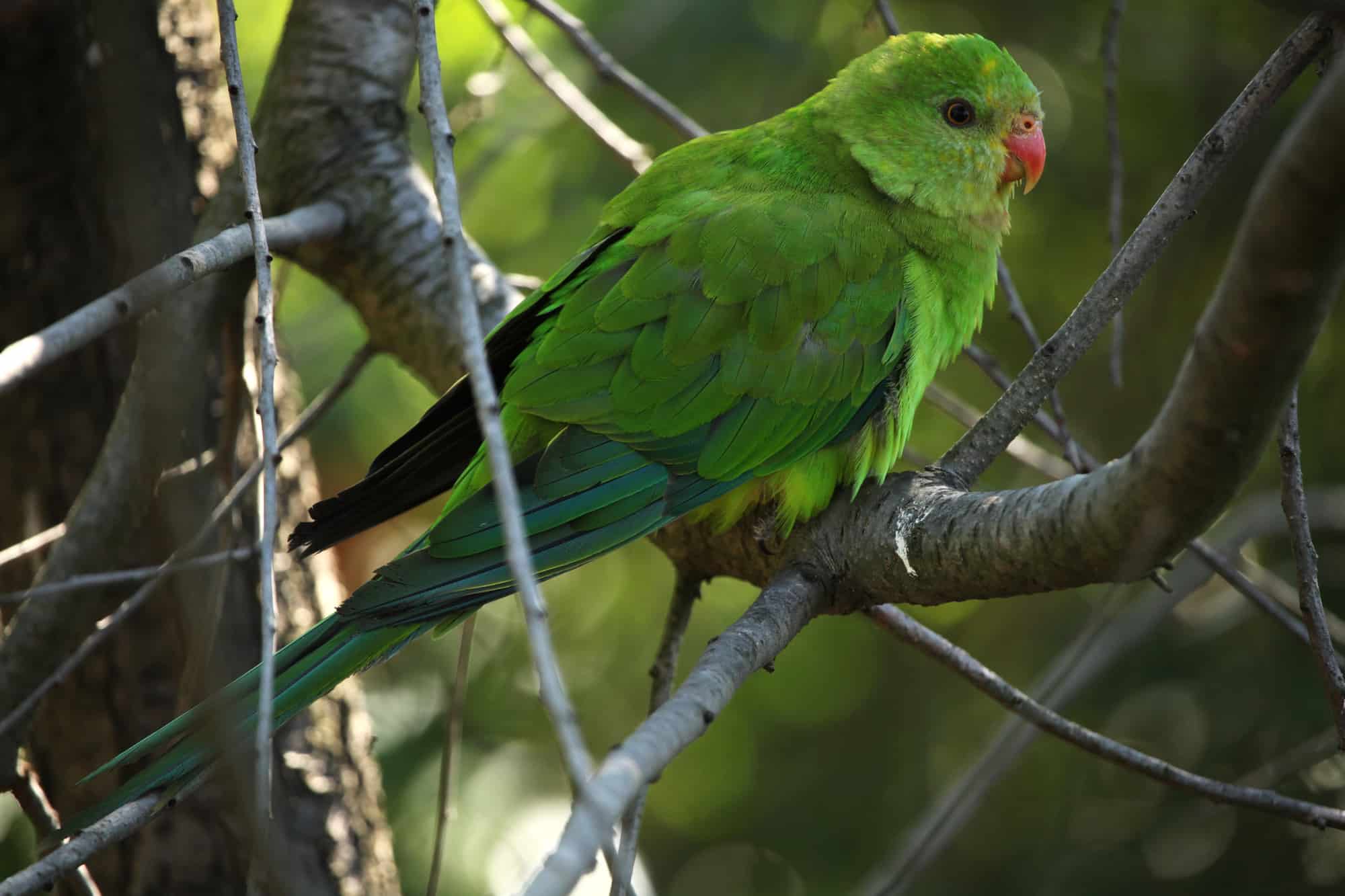
The last green bird on the list is yet another Lorikeet. It is genuinely almost entirely green. Its beak is red, though! Australia is their homeland, but you can find this bird in pet stores around the world! But be sure to buy this one if you like it without waiting too long – the population of these Lorikeets is diminishing.
However, take this warning to heart – they are not the easiest bird to handle for novices. Their small size is an appealing feature, but they are temperamental, territorial, and domineering. You have to set up the rules and your dominance from a young age. They are intelligent but will not cuddle with you.
The short length of the Lorikeet reaches up to 9 inches. The weight is 3 ounces.
And this is the list of the most popular and beautiful green parrots found in nature and in households. Some of them are suitable to become your house pet, others not. In the end, it’s up to you to choose a bird and its coloring that will bring you the most pleasure. They all come with different characters and behaviors.
The one thing that all parrots have in common is the need for attention and proper care. Be ready to devote your time to your pet, feed, clean it, and play with it!

